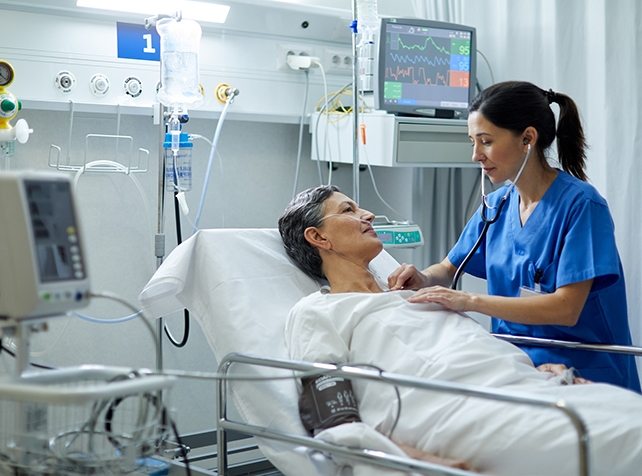Table of Contents
ToggleAssessment:
Objective Data:
- Monitor vital signs, paying attention to any signs of fever (elevated temperature), increased heart rate, or abnormal respiratory rate.
- Assess the patient’s skin for signs of infection, such as redness, swelling, warmth, or purulent drainage at wound sites.
- Evaluate laboratory results, including complete blood count (CBC) with differential, C-reactive protein (CRP), and blood cultures, to identify potential infection.
- Observe for any invasive devices, such as intravenous catheters or urinary catheters, and assess the insertion sites for signs of infection.
Subjective Data:
- Interview the patient about any recent surgeries, invasive procedures, or prolonged hospital stays.
- Inquire about the presence of symptoms such as pain, discomfort, or changes in urinary or bowel habits that may indicate infection.
- Obtain a thorough medical history, including any chronic illnesses, immunocompromised conditions, or recent antibiotic use.
Diagnosis:
- Risk for Infection related to compromised skin integrity, invasive procedures, or immunocompromised state.
Planning:
- The patient will remain free from infection during the hospital stay, as evidenced by normal vital signs, absence of systemic signs of infection, and intact skin.
Interventions:
- Hand Hygiene:
- Emphasize and ensure proper hand hygiene practices for healthcare providers, visitors, and the patient.
- Educate the patient on the importance of handwashing and provide alcohol-based hand sanitizer for regular use.
- Aseptic Technique:
- Utilize aseptic technique during all invasive procedures, wound care, and the insertion of any indwelling devices.
- Train healthcare providers on the correct application of sterile procedures to minimize the risk of contamination.
- Monitor and Maintain Skin Integrity:
- Conduct regular skin assessments, especially in areas prone to breakdown, such as pressure points or surgical incisions.
- Implement preventive measures, including the use of pressure-relieving devices and moisture control.
- Administer Prophylactic Antibiotics:
- Administer prophylactic antibiotics as prescribed before invasive procedures or surgeries.
- Follow institutional guidelines for antibiotic selection, dosage, and timing to maximize effectiveness.
- Catheter Care and Removal:
- Implement proper urinary catheter care to prevent catheter-associated urinary tract infections (CAUTIs).
- Assess the necessity of catheters regularly and remove them promptly when no longer needed to reduce infection risk.
- Promote Respiratory Hygiene:
- Educate the patient on respiratory hygiene practices, including cough etiquette and the use of tissues or masks when appropriate.
- Implement isolation precautions when necessary for patients with known or suspected infectious diseases.
- Environmental Cleaning:
- Ensure routine environmental cleaning of patient rooms, equipment, and high-touch surfaces.
- Educate housekeeping staff on infection control protocols and the proper use of disinfectants.
- Monitor and Control Device-Related Infections:
- Regularly assess and care for indwelling devices such as central lines, peripheral IVs, or urinary catheters.
- Strictly adhere to sterile techniques during device insertion and follow established protocols for maintenance.
- Education and Communication:
- Educate the patient and family about signs and symptoms of infection, the importance of reporting any changes promptly, and the prescribed antibiotic regimen if applicable.
- Foster open communication among healthcare providers to ensure effective collaboration in infection prevention.
Evaluation:
- Monitor vital signs and assess for any signs of infection regularly.
- Review laboratory results for indications of infection or changes in inflammatory markers.
- Assess the patient’s skin integrity and note any improvements or deterioration.
- Evaluate the patient’s understanding and adherence to infection control measures.
- Adjust the care plan based on ongoing assessments and address any emerging infection risks promptly.
Read more: Nursing Care Plans
Read more: Fall Risk Nursing Care Plan







